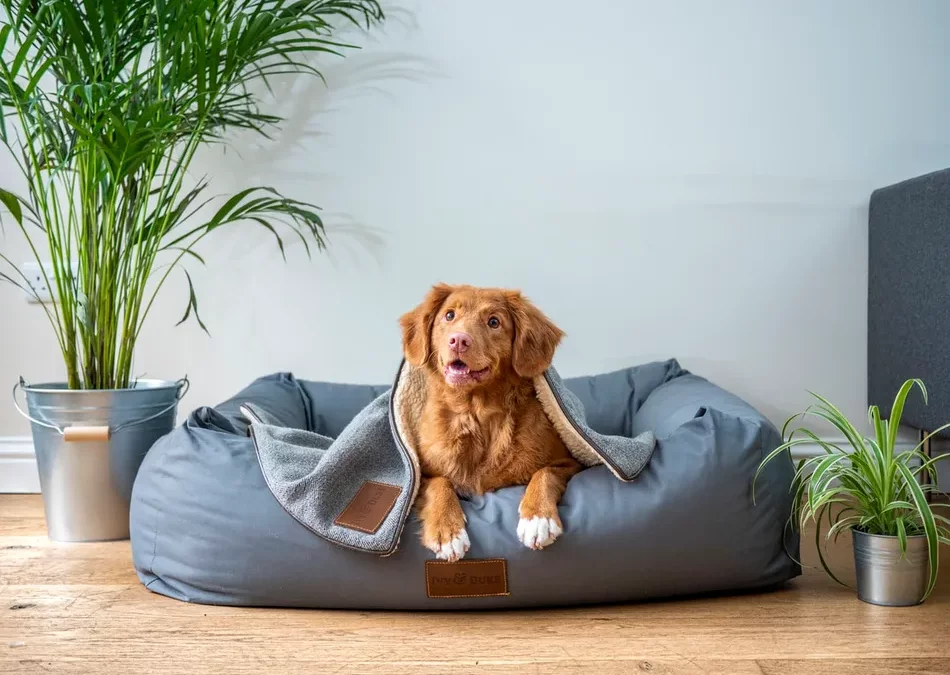
Pet ownership is at an all-time high in the United States. The same goes for several other countries across the world.
It’s a wonderful trend in terms of animal welfare but a potential disaster for homes that aren’t prepared for the messes that may ensue. That’s a bad situation for homeowners.
The good news is that proper preparedness and effective problem-solving can help pet owners keep their homes neat and tidy. With this in mind, let’s take a look at several tips for preventing pet-friendly homes from turning into barns:
Switch to dust-free cat litter
One of the best things about owning cats is that most felines have an instinctive desire to poop and pee in a place where they can bury their waste underneath a granular substance. In other words, stick a litter box in the closet, and most cats will use it as a bathroom without training. Unfortunately, common types of cat litter often release bacterial-laden dust into the air. The solution is to switch to dust free cat litters made with silica gel. This type of cat litter will help keep your floors clean.
Make potty training a top priority
Far too often, first-time pet owners fail to properly potty train their pets. The resulting messes on the floor are not only a pain to clean up, but make your home smell. Furthermore, it’s difficult to remove all traces of pet feces and urine from carpeting. With this in mind, make potty training a top priority from the moment your pet arrives at their new home. The process may take several weeks, and it may seem like you’re not making progress, but your pet will eventually put two and two together. Just be patient!
Get a HEPA air purifier
If you live in a pet-friendly home, then chances are you can easily spot countless hair and dander particles floating in the air when the sun hits at just the right angle. Those particles are there 24/7 and eventually make their way into furniture fibers. What’s more, they contribute to poor indoor air quality. The solution is to invest in a high-efficiency particulate-absorbing (HEPA) air purifier. These devices suck in the air in your home, removing pet dander and other unwanted particles in the process.
Vacuum daily
The honest truth is that it’s hard to keep carpets clean when you own pets. The best way to protect carpets and rugs is to vacuum them as often as possible. We recommend once daily or once every other day. You should also commit to heavy-duty carpet cleaning at least once per year. Doing so will prolong the life of carpets and rugs subject to constant exposure to paws and claws.
Give monthly baths
Few dogs tolerate bath time without squirming and causing a fuss. Unfortunately, that means many pet owners put it off for months at a time. It doesn’t take a hygiene expert to see how a dog that hasn’t had a bath in months will spread dirt and germs wherever they go. With this in mind, make a point to give your dogs a bath at least once a month. If they’re impossible to get into the tub, consider taking the process outdoors and using a garden hose with a bucket and soap. If that doesn’t work either, take your canine to a grooming facility.
Keep claws and nails trimmed
Cat claws and dog nails grow just like our fingernails. If left untrimmed, they can cause damage to floors and furniture in the form of scratches and the unwanted distribution of dirt and debris. The key is to keep your pets’ claws and nails trimmed. With that said, we do not advise declawing your cats. It’s a cruel procedure that is being banned in many places for good reason.
Have a game plan for accidents
Accidents happen. Even the best-trained dog will eventually pee or poop indoors if left unattended. Given the possibility of getting stuck in traffic or being asked to stay late at work, pet owners need a game plan for the inevitable accident. Have a process ready to go with the help of household cleaners and other tools and resources. That way, you’re able to clean the mess swiftly and thoroughly.
More people are choosing to own pets than ever before. It’s a welcome shift in terms of making sure dogs and cats have homes, but potentially bad in terms of keeping those homes from turning into barns. Fortunately, there are many ways for pet owners to prevent that from happening.
Elizabeth Hartley
Related posts
Stay connected
Today's pick
- Things to Remember While Designing Your Custom Modular Kitchen in GurgaonGurgaon now known as Gurugram is the second largest city in the state of Haryana and is a reflectiossn of an ideal modern city with futuristic goals. Witnessing rapid urbanization, it has also emerged as a hub for contemporary homes, with homeowners seeking innovative and... The post Things to Remember While Designing Your Custom Modular […]

